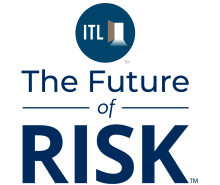With a volatile workforce, an evolving regulatory landscape and an early surge in CAT claims this year, the 2025 insurance landscape is anything but calm. Middle-market businesses are watching closely and assessing their corresponding strategic risk management options to reduce risk and costs.
Overall, commercial insurance rates for the middle market in the U.S. remained stable at 6.9% through Q4 2024, though specific lines display unique trends. While property insurance has stabilized with some regional variations, cyber rates continue to flatten or decrease. Meanwhile, volatility persists in commercial auto and excess/umbrella coverage due to varying exposure profiles, loss history and program structures.
This analysis is based on data collected from 900 HUB middle-market retail brokers and HUB's extensive book of business, representing over 500,000 middle-market clients with revenues up to $1.5 billion in Q4 2024. The data primarily reflects middle-market companies, with distinct differences from the shared and layered complex space, particularly in the property sector.
Property insurance: Stabilization amid catastrophic events
Despite significant natural disasters in 2024, including hurricanes and wildfires contributing to an estimated $50 billion in insured losses, the property insurance market remains stable. Regional disparities exist, with South Florida experiencing premium reductions of 20-30%, while markets such as Nashville see slight increases of up to 5%.
One notable factor shaping property insurance trends is the evolving approach to catastrophe modeling. Traditional models, which rely on historical trends, struggle to keep pace with accelerating climate change. New AI-driven models provide more precise risk assessments by continuously incorporating weather data and real-time environmental changes. The increasing sophistication of these models may lead to improved underwriting accuracy, helping insurers navigate emerging risks more effectively.
Additionally, building codes and land-use policies remain critical in shaping property risk exposure. Recent flooding in unexpected locations highlight the need for more forward-thinking risk mitigation strategies.
General liability and excess/umbrella: Market softening with nuances
The general liability and excess/umbrella insurance markets have shown signs of softening, though outcomes vary depending on business classification and geography. Legal environments play a key role, as jurisdictions with high litigation risks continue to experience pressure on rates. In contrast, regions with favorable legal climates see greater stabilization or slight premium reductions.
Social inflation remains a significant factor, with increased jury awards driving higher claim settlements. Large punitive damages against corporations—fueled by public sentiment—continue to affect underwriting decisions, making it challenging for businesses to secure affordable excess liability coverage.
Workers' compensation: Stability prevails
As a regulated line of insurance, workers' compensation remains relatively stable. Market fluctuations are minimal, but concerns are on the rise. Businesses must continue to manage workplace safety and compliance to control costs and prevent adverse claim developments.
Commercial auto: A persistently challenging market
One of the core insurance lines, commercial auto remains one of the least stable markets due to rising claim costs, litigation trends and driver-related risks. Factors contributing to persistent volatility include:
- Increased vehicle repair costs: Modern fleet vehicles incorporate advanced technology, such as sensors, onboard computers and driver-assist features, leading to higher repair expenses for even minor accidents.
- Litigation and nuclear verdicts: The commercial auto sector faces aggressive legal targeting, with attorneys capitalizing on accident-related claims. High-profile cases have led to substantial settlements, further straining the market.
- Distracted driving and driver shortages: The prevalence of inexperienced last-mile delivery drivers and continued issues with cell phone-related distractions contribute to elevated accident rates. Businesses reliant on delivery fleets must focus on enhanced driver training and telematics to mitigate risk.
Given these challenges, businesses should anticipate continued premium increases for commercial auto coverage and consider alternative risk management strategies, such as self-insured retentions or captive insurance programs.
Cyber insurance: Competitive market dynamics
The cyber insurance market has become increasingly competitive, with rates either stabilizing or declining. A key driver of this trend is improved cybersecurity measures implemented by businesses, reducing insurers' exposure to catastrophic cyber events. Additionally, increased market capacity has introduced more competitive pricing, benefiting policyholders.
Despite a year of significant cyber incidents, including high-profile data breaches and ransomware attacks, underwriters are demonstrating a more measured approach. Companies with robust cybersecurity protocols—such as multi-factor authentication (MFA), endpoint detection, and rapid response capabilities—are in a strong position to secure more favorable rates.
2025 market expectations
Key takeaways from Q4 2024 to apply to 2025 include:
- Property rates are expected to remain stable, with regional variations. Businesses in catastrophe-prone areas should evaluate risk modeling improvements to enhance their insurance strategies.
- General liability and excess/umbrella markets are softening, though litigation risks persist. Companies should remain vigilant about social inflation and high jury verdict trends.
- Workers' compensation will likely continue its trend of stability. Employers should focus on loss prevention and workplace safety programs.
- Commercial auto remains a challenging line, with continued cost pressures. Businesses should explore risk management solutions to mitigate rising premiums.
- Cyber insurance remains a competitive market, with opportunities for cost savings. Strong cybersecurity measures will be crucial in securing favorable rates.
By understanding these market dynamics, middle-market businesses can better navigate the evolving insurance landscape, optimize risk management strategies and ensure financial resilience.








